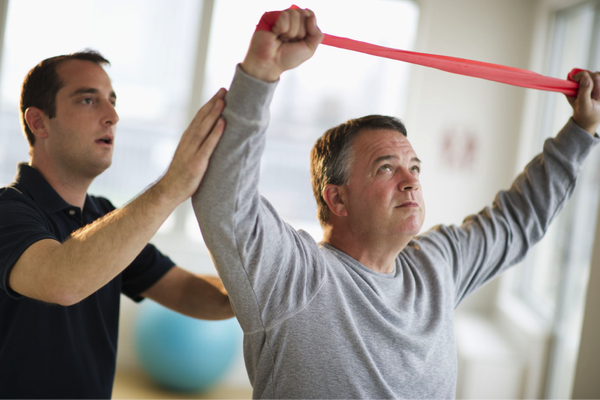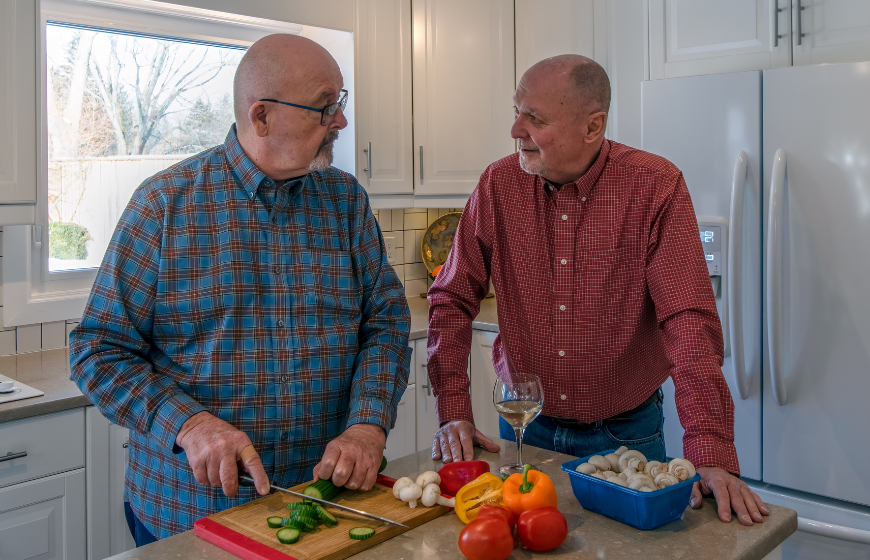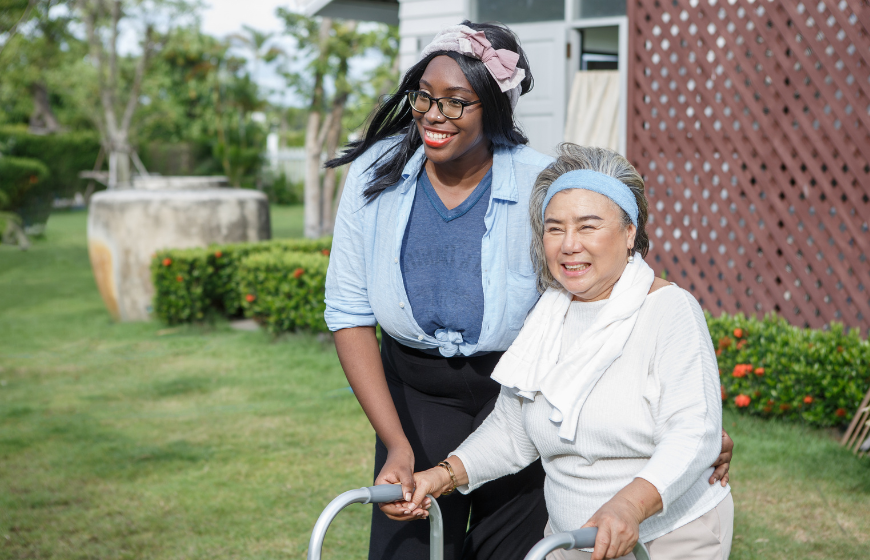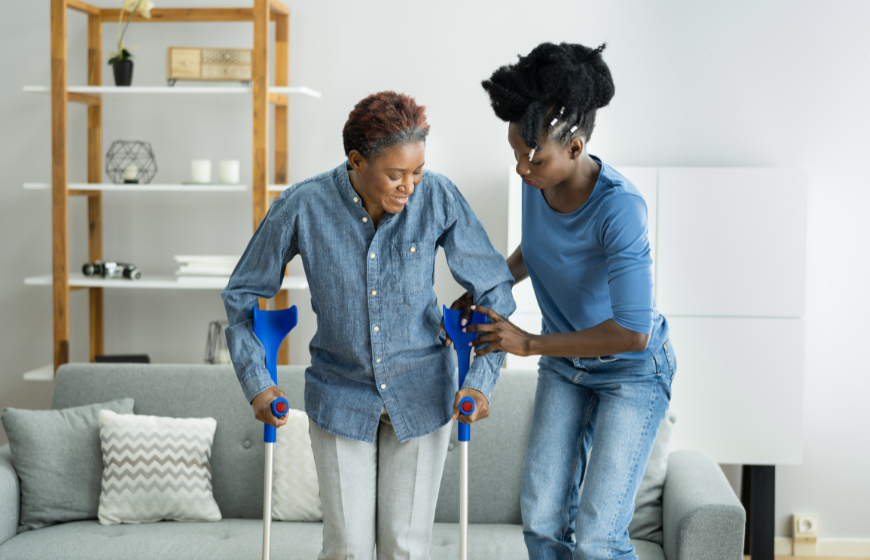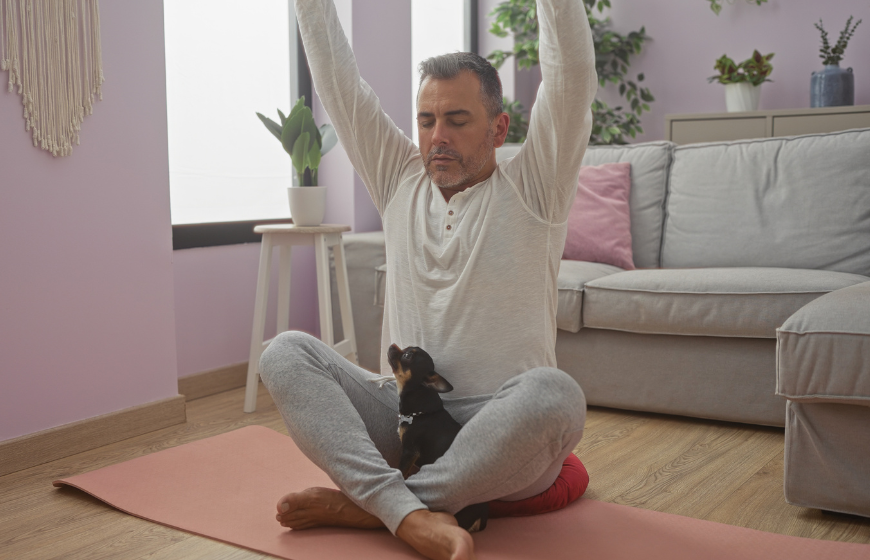Improving Mobility and Balance
Living with Parkinson’s disease poses unique challenges for many individuals, mobility and balance being two of them. To combat the struggles associated with this condition, it is important to incorporate targeted exercises into one’s daily routine. Anyone who has been diagnosed with Parkinson’s can benefit from these five effective exercise routines to help balance healthy mobility and movement with managing symptoms. That includes individuals living in a senior home care environment, as well as those with 24/7 and live-in care.
1. Walking with Purpose
One of the best Parkinson’s exercises is purposeful walking. All it takes is a daily routine of walking with deliberate steps. Individuals should focus on maintaining a steady pace and swinging their arms gently. This not only helps improve balance but also increases coordination, which may help reduce the risk of falls.
Begin with short walks and gradually increase the duration as strength and confidence grow. Trained professionals such as home health aides can help guarantee safety during these walks by aiding in balance and support. The assistance of a caregiver also provides encouragement for a consistent walking routine.
2. Tai Chi for Graceful Movements
Tai Chi (an ancient Chinese martial art) can be very beneficial for Parkinson’s patients. This low-impact exercise emphasizes slow, flowing movements and deep breathing, promoting improved balance and flexibility. Tai Chi also heightens bodily awareness, which is critical for people with Parkinson’s disease who may experience changes in spatial perception.
Joining a Tai Chi class or following online tutorials may be the first step in incorporating this calming exercise into one’s everyday routine. The gentle nature of Tai Chi makes it accessible for people of varying fitness levels, leading to increased stability and a greater sense of overall well-being.
3. Strength Training for Stability
Maintaining muscle strength is extremely important for Parkinson’s patients because it directly contributes to improved stability and mobility. Resistance training helps target key muscle groups that may prevent slips and falls. Using resistance bands, light weights, or even bodyweight exercises like squats and lunges can all be beneficial.
The most effective strength training regimens target both upper and lower body muscle groups. It is important to consult a qualified senior care professional, a physical therapist, and/or a licensed physical trainer to understand your loved ones’ specific needs and abilities. It is strongly advised to start light, then gradually and gently increase the intensity of strength training exercises over a period of time. The focus is to build and maintain muscle and endurance.
4. Balance Exercises for Stability
Improving balance is a big part of Parkinson’s disease management. Simple balance exercises can be worked into any daily routine to promote stability. For example, standing on one leg for short durations (initially using support) and gradually increasing the time as balance improves may be all it takes to see growth.
Depending on the progression of your loved one’s Parkinson’s disease, home health care professionals may also include exercises that involve shifting weight from one foot to the other, like heel-to-toe walking or side leg raises. These exercises not only strengthen the muscles responsible for balance but also help improve proprioception – the body’s sense of its position in space. Regularly practicing these exercises can lead to a more stable and confident gait.
5. Swimming for Low-Impact Exercise
Swimming is an excellent low-impact exercise that offers many benefits for people with Parkinson’s disease, as the buoyancy of water lessens the impact on joints while providing resistance for muscle use. Swimming can also improve cardiovascular fitness, flexibility, and overall endurance.
People in the early stages of Parkinson’s may be able to incorporate aquatic therapy into their exercise routines. This could involve working with a qualified trainer or participating in water aerobics classes designed for people with Parkinson’s. The supportive environment of the water allows for a full range of motion, making it an ideal exercise for people experiencing stiffness or joint discomfort.
Remember, personalized care and guidance from professionals – such as home health aides or private duty nursing – can improve the effectiveness and safety of any exercise routine. The goal is to help individuals establish a balance between challenging activities while still listening to their bodies’ limits.
Unrivaled Home-care Excellence: Your Partner in Parkinson’s Care
At Alliance Homecare, our mission is to deliver unparalleled home care services to clients and their families. We are guided by unwavering standards of excellence, empathy, respect, and education. Devoted to assuring the well-being of our clients and their loved ones, we adhere to a stringent code of confidentiality. Our distinguished team includes elite healthcare professionals who embody the highest principles of integrity and professionalism.For premier home care services that prioritize excellence and compassion, connect with Alliance Homecare today. Reach out to us at 646-989-3936 or fill out our online form.
We are proud to be New York’s premier home health care agency, seamlessly facilitating the transition to in-home care for over 15 years. Contact our experienced care team today to start getting your loved one the care they deserve, or learn more about our available home care services here.
